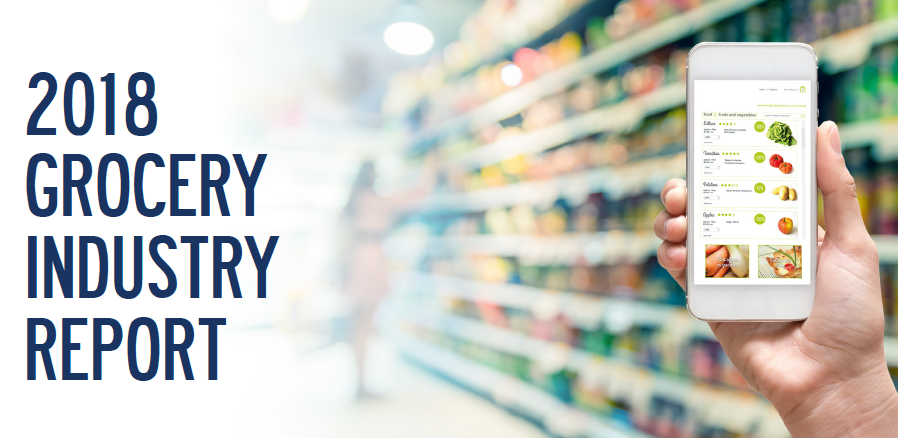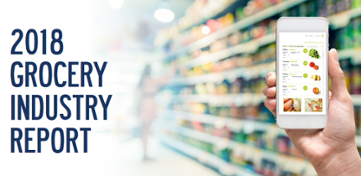Grocery shopping ain’t what it used to be. With omnichannel and digital-only challengers threatening legacy grocery’s status quo, operators are racing to build out their omnichannel operations, ranging from in-store pickup of digitally ordered items (click and collect) to rapid grocery delivery (Amazon’s got it down to 2 hours or less).
But despite all this change, for many consumers, as we learned in our 2018 Grocery Industry Report, grocery shopping remains business as usual. Few of our respondents have entirely transferred their purchases to digital means, with the vast majority steadfastly going in-store as a rule. A lot of this has to do with familiarity—if there is one takeaway from this study, it is that consumers are cautious but curious about the ways technology can reshape and potentially optimize their grocery shopping responsibilities (and pleasures!)—but as we break things down by income and generation, well, things start to get interesting.
So, you probably don’t have to be a grocery market research genius to guess it, but TrendSource’s 2018 Grocery Industry Report is devoted to omnichannel: in a world with a heretofore unfathomable diversity of options when it comes to the grocery shopping experience, how have customers adopted and resisted omnichannel grocery shopping? We set out to answer this and several other questions in our report.
Omnichannel Slow to Develop
Though generational segmentations suggest digital and omnichannel adoption is indeed imminent, for the time being, consumers are sticking with what they know, namely in-store shopping. Indeed, 71.6% of respondents reported shopping via digital channels less than 25% of the time; said differently, nearly three-quarters of those surveyed shop digitally less than one-quarter of the time.
That is far from mass adoption, and while it is tempting to suggest that millennials will drive this number up as they become the dominant generation, and this is likely true, there are parts of the in-store experience that millennials disproportionately appreciate and can simply not find online. Grocers must work to build this into their nascent digital operations.
Millennials and Free Food
One thing millennials love about the in-store experience they can’t find online: they are drawn in-store by free food samples disproportionate to other generational groups. Yup, they want samples in those adorable little paper single serving cups with tiny forks and spoons. While it is tempting to just label millennials as underpaid hustlers making stores into their own all-you-can-eat buffet, this conceals some generational truths.
The only motivating factor millennials found more powerful was the opportunity to discover new foods by browsing. Taken together, these numbers suggest that millennials want the opportunity to explore stores for foods and flavors they have yet to discover, and, if given the opportunity, would love to try some of those foods for free.
As hipster rights of first discovery come to identify an entire generation, millennials would love to find a new fruit or spice profile and introduce it to their friends at the next potluck. “Yeah, apples are cool…but have you ever tried starfruit?” you can almost hear them ask.
Particularly in stores like Whole Foods, the opportunity to treasure hunt through a store and find new and exciting things to share is a powerful in-store inducement.
Digital Browsing
This millennial motivator also alerts us to a digital grocery shortcoming—while stores have built out the “buy it again” and “customers also bought” automated suggestions, they have yet to feature a suitable browsing system to allow customers to discover new items.
While we don’t entirely know what a suitable browsing system would look like (though we’d love to figure it out for you), we know that grocers have yet to find one.
Paying For Playing Politics
The report isn’t solely focused on omnchannel—there are several additional lessons for grocers in this study. For example, considering the contemporary political climate, we wanted to investigate whether grocers can anticipate an approval bump or just a plain old bump upside the head if they throw their support behind particular political candidates. The math is clear on this one: grocers should stay out of politics.
This is because consumers are almost 10% likelier to blame stores for politics than do not align with their own than they are to reward stores when they do. With national politics so evenly divided and regional politics becoming just as contentious, grocers should take note: it does not pay to play politics.
What Else is in the Report?
The full report offers an in-depth exploration of many additional topics, including interest and adoption rates for in-store checkout options ranging from traditional to self-checkout to automated checkout a-la Amazon Go. Also, what is the biggest in-store deal breaker for customers (hint: it has to do with filth).
The report further offers segmentations by generation, gender, community (rural, suburban, and urban) income level, and dietary restrictions. This allows us to ask and answer questions such as: Do vegans’ dietary restrictions translate into a broader concern for store’s ethics? How do income levels shape willingness to utilize click-and-collect and grocery delivery? Which generations would like some friendly conversation with their in-store shopping experience, and which simply want to be left alone? And do men and women grocery shop differently?
Find out the answers to these and many more questions by downloading the report.


